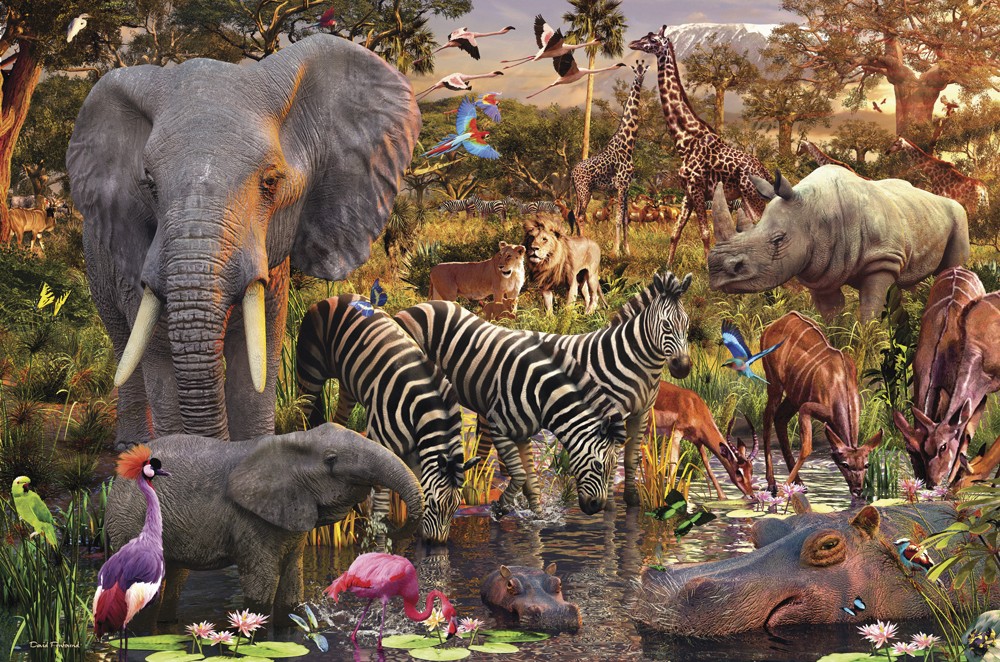 Animals are multicellular, eukaryotic organisms of the kingdom animalia (also called Metazoa). All animals are motile, meaning they can move spontaneously and independently at some point in their lives. Their body plan eventually becomes fixed as they develop, although some undergo a process of metamorphosis later on in their lives. All animals are heterotrophs: they must ingest other organisms or their products for sustenance.
Animals are multicellular, eukaryotic organisms of the kingdom animalia (also called Metazoa). All animals are motile, meaning they can move spontaneously and independently at some point in their lives. Their body plan eventually becomes fixed as they develop, although some undergo a process of metamorphosis later on in their lives. All animals are heterotrophs: they must ingest other organisms or their products for sustenance.
Tampilkan postingan dengan label Africa. Tampilkan semua postingan
Tampilkan postingan dengan label Africa. Tampilkan semua postingan
Sabtu, 17 Desember 2016
and Information About Wildlife and Animal Life and Survival in Africa
 Animals are multicellular, eukaryotic organisms of the kingdom animalia (also called Metazoa). All animals are motile, meaning they can move spontaneously and independently at some point in their lives. Their body plan eventually becomes fixed as they develop, although some undergo a process of metamorphosis later on in their lives. All animals are heterotrophs: they must ingest other organisms or their products for sustenance.
Animals are multicellular, eukaryotic organisms of the kingdom animalia (also called Metazoa). All animals are motile, meaning they can move spontaneously and independently at some point in their lives. Their body plan eventually becomes fixed as they develop, although some undergo a process of metamorphosis later on in their lives. All animals are heterotrophs: they must ingest other organisms or their products for sustenance.Rabu, 30 November 2016
Nearly all wild lions live in subSaharan Africa, but one small
Skirball Center for the Performing Arts New York University
Where Do Wild Doves Live ?
The Witcher 3: Wild Hunt Update 1.03 Now Live For PS4 SA Gamer
LIVE FAST DIE YOUNG amp; BE WILD HAVE FUN KEEP CALM AND CARRY ON Image
Kamis, 24 November 2016
Wild Dogs and Roan Antelope they don39;t play nice Africa Geographic
Animals in Alaska, Wild Animals That Live In Alaska, Animals of Alaska
wildlifepic
Wild Safari Live” Captures Rare Wild Dog Kill – Nat Geo TV
Wild Kratts Live Tour: Are They Headed Your Way? 4 The Love Of
Langganan:
Komentar (Atom)